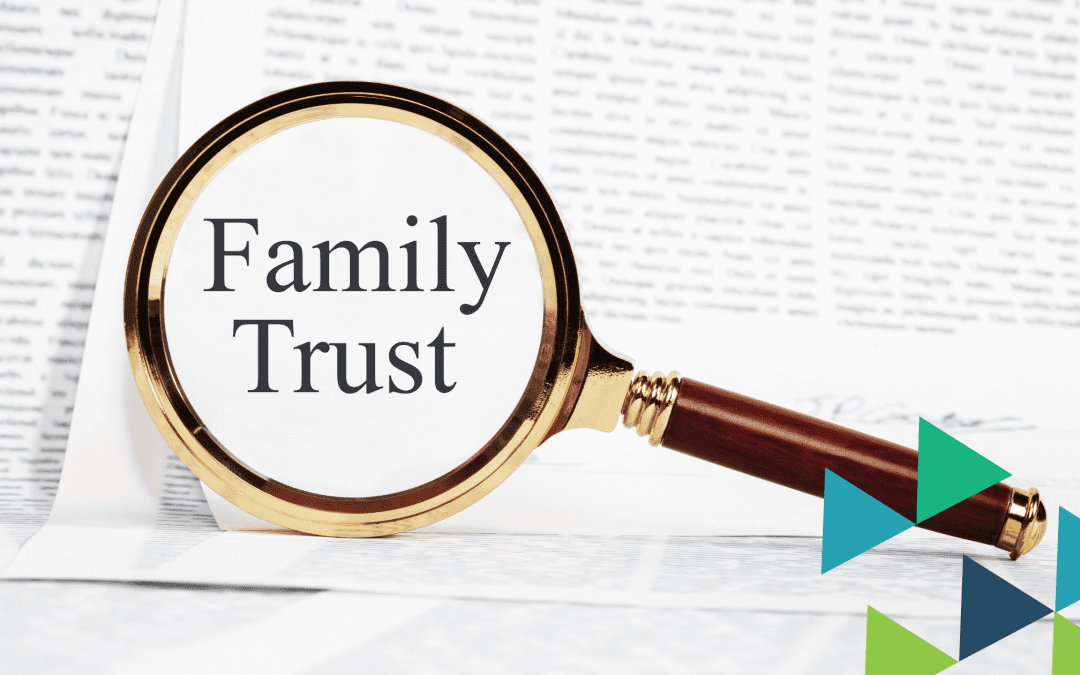With the ATO’s new directives on the taxation of trust distributions, it’s essential to review arrangements. Book a planning session to ensure you’ve got the best beneficiary arrangements.
What is a Family Trust?
A family trust is a legal arrangement in which assets are transferred from an individual or a family to a trust, which is managed by a trustee for the benefit of the family members. The purpose of a family trust is to provide financial security and protection for family members, and to facilitate the transfer of assets from one generation to the next.
The assets placed in a family trust can include cash, investments, property, and other assets. The trustee is responsible for managing the assets and making distributions to the beneficiaries according to the terms of the trust agreement.
Family trusts can have a range of different purposes, such as providing for the education and support of children or grandchildren, protecting assets from creditors or lawsuits, minimizing taxes, or ensuring that assets are distributed according to the wishes of the grantor.
There are different types of family trusts, including revocable trusts, irrevocable trusts, and living trusts. The specific type of trust that is appropriate for a particular family will depend on their individual circumstances and goals. It is important to consult with your TSP Accounting team to determine the best approach for creating a family trust.
Who owns the assets in a Family Trust?
In a family trust, the assets are legally owned by the trust itself, rather than by the individual or family members who originally owned them. The trust is managed by a trustee, who has a legal obligation to manage the assets for the benefit of the trust beneficiaries.
The trust beneficiaries are the individuals or groups of individuals who are designated to receive the income or assets from the trust. They can be family members or anyone else the grantor chooses to include.
The grantor is the individual who creates the trust and transfers assets into it. The grantor can also be a trustee or a beneficiary of the trust, but they are not considered to own the assets in the trust once they have been transferred.
It is important to note that the ownership structure of a family trust can have important legal and tax implications, and it is important to consult with an experienced attorney or financial advisor to determine the best approach for your specific circumstances.
New Changes – How will They Impact Me?
If your trust pays adult-child beneficiaries, then you’ll need to know how the new ATO tax guidance rules could alter your beneficiary arrangements. The changes won’t affect every small business operating through a trust arrangement, but it’s important to check that existing provisions meet the new requirements.
The ATO is interested in agreements where parents benefit from trust income allocated to their children or other family members, particularly where tax avoidance could be an issue, and family member beneficiaries are unaware of the provisions.
Another area of focus is the application of Division 7A rules to trusts that pay private companies, especially with related business entities and where the trust and company are part of the same family group.
Do Your Trust Distribution Arrangements Need to Change?
Trust beneficiary arrangements can be complex, and we want to make sure your trust arrangements meet the ATO guidelines so you don’t get penalised. We can examine your situation in detail against the new information and advise you if any changes to trust arrangements are required.
With the ATO’s stronger position on the taxation of trust distributions, it’s essential to review arrangements as soon as possible.
We have an article about general trust administration and management – you can read it here
Book a tax planning session with us today, so we can make sure you’ve got the best beneficiary arrangement for your business and family. Contact your TSP team on 49 264155 or email us at ad***@****************om.au

